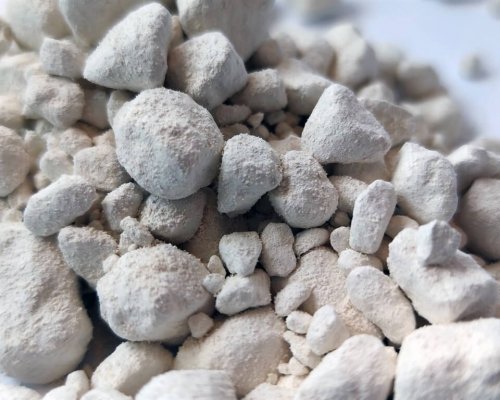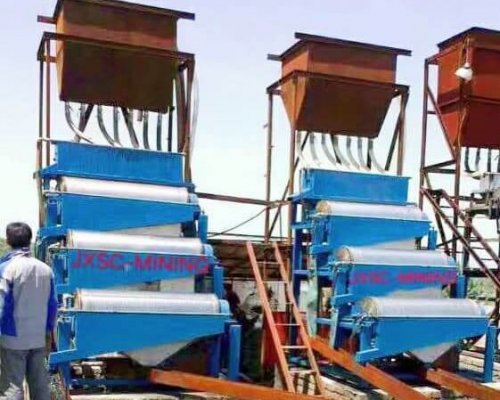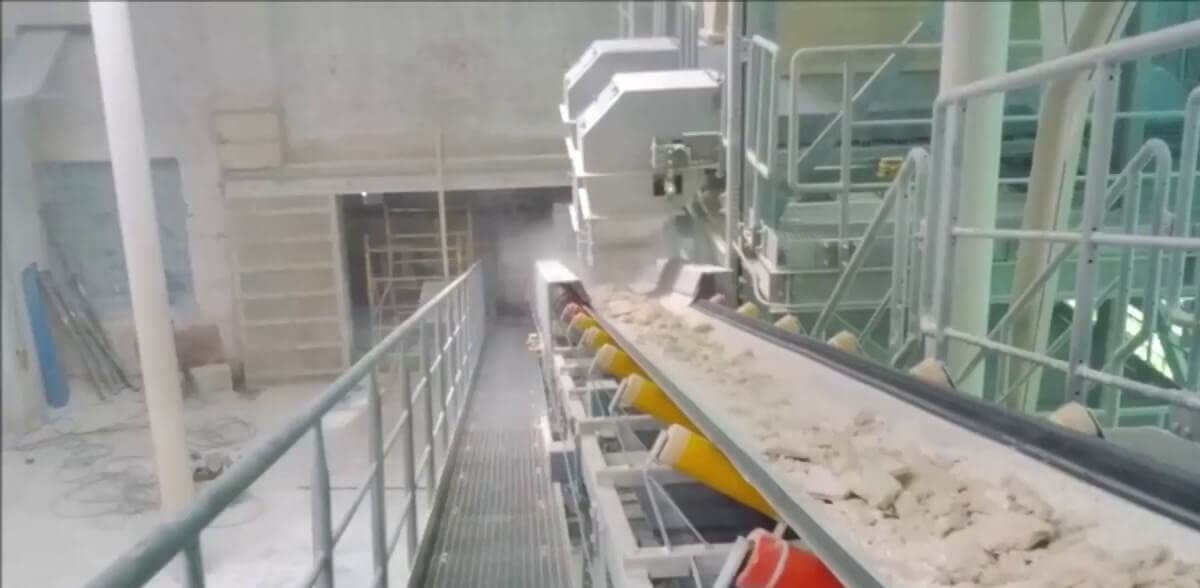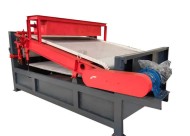The occurrence state of iron in kaolin is the main factor determining the method of iron removal. At present, the occurrence state of iron in kaolin at home and abroad is divided into two types: one is existing in kaolinite and accessory minerals (such as mica, titanium dioxide and illite), which is called structural iron. The other exists in the form of independent iron minerals, called free iron (including surface iron, fine-grained crystalline iron, and amorphous iron).
Kaolin clay
Kaolin is a clay and clay rock dominated by kaolinite clay minerals. Kaolin is white, fine and soft clay-like, and has good physical and chemical properties such as plasticity and fire resistance. It is also an important non-metallic mineral. It is called the four major non-metallic minerals together with mica, quartz and calcium carbonate. It is widely used.

Kaolin is mainly used in papermaking, ceramics and refractory materials, followed by coatings, rubber fillers, enamel glazes and white cement raw materials, and a small amount is used in plastics, grinding wheels, daily cosmetics, medicine, textiles, petroleum, chemicals, building materials, national defense, etc. Industrial sector. With the rapid development of modern science and technology, some high-tech fields have begun to use kaolin as a new material, and the high-temperature resistant porcelain parts of atomic reactors, space shuttles and spacecraft are also made of kaolin.
In order to minimize the iron content in kaolin and improve the purity, the commonly used methods for iron removal and purification of kaolin are:
1. Magnetic separation method
Magnetic separation iron removal method has the advantages of energy saving and low environmental pollution, and has become the preferred iron removal method for various kaolin enterprises. The separation is based on the different mass magnetic susceptibility of the minerals, that is, the magnetic field has different magnetic field effects on different iron-bearing minerals. Ordinary magnetic separation is more effective for strong magnetic minerals, however, iron mineral impurities in kaolin are usually weak magnetic. At present, the high gradient strong magnetic separation method is mainly used, or the weak magnetic minerals are converted into strong magnetic iron oxide after roasting, and then the ordinary magnetic separation method is used to remove them.
The high gradient strong magnetic field magnetic separation method has good magnetic separation and iron removal effect on weak magnetic fine particles and even colloidal particles in kaolin, and the purity of kaolin is significantly improved.

The high gradient magnetic separation method has two major advantages: 1. It has an advanced solenoid magnet structure; 2. It has a magnetic concentration medium that can produce high magnetic induction intensity. Under high magnetic field strength, the surface of the stainless steel magnetic concentrating medium can generate a high magnetic field gradient, which can separate weak magnetic materials of micron or colloidal particle level.
2. Flotation Process Method
The flotation process can effectively remove iron, titanium and carbon impurities in kaolin, and realize the recycling and reuse of low-grade kaolin resources such as coal-measure kaolin. Kaolin clay particles are finer and more difficult to float than gangue minerals. Therefore, the kaolin flotation purification process mostly adopts reverse flotation to achieve a better effect of removing impurities.
- Carrier flotation method
The method is to add a mineral carrier, such as calcite, etc. during the flotation process, to adsorb the extremely fine impurity mineral Fe2O3 on the carrier mineral, and to adhere to the bubbles by means of the collector or the hydrophobicity of the carrier itself to obtain iron-containing carrier foam. And kaolin concentrate products, so as to realize the separation of kaolin and Fe2O3.
According to the research, using tar oil as collector, sodium carbonate as pH value adjuster, ammonium sulfate as inhibitor, water glass as slurry dispersant, with the help of conventional mechanical stirring flotation machine, the carrier flotation method is used to make it. The Fe2O3 content in a certain kaolin was reduced from 0.72% to below 0.5%. The iron removal effect of this method is not only related to the adsorption, entrainment, agglomeration, and crystal mixing of iron impurities in kaolin by the adsorption carrier, but also to factors such as the pH value of the slurry system, the time and place of adding the carrier; The application of kaolin in iron removal and purification is limited.
- Double-liquid flotation method
In this method, fatty acid (or other hydrophobic collectors that can capture impurity iron minerals) is added to the kaolin slurry, stirred, static, and layered to form organic liquid (containing Fe2O3) and kaolin suspended double-layer liquid, and then reused for gravity separation. equipment is separated.
Stirring intensity is an important factor affecting the separation effect of this method. If the stirring intensity is insufficient, the organic phase will be unevenly dispersed, and the probability of ferrous minerals colliding with them will be reduced; if the stirring intensity is too large, the intermediate phase of the milky turbid liquid will be easily formed, so the appropriate stirring intensity must be selected; in addition, this method will produce Lots of organic waste. The above factors have resulted in the limitation of the application of double-liquid flotation method in iron removal and purification of kaolin.
- Selective flocculation method
The selective flocculation method is to add a flocculant to the fully dispersed pulp, and selectively flocculate the free and harmful iron impurities dispersed in the pulp through the bridging effect between the flocculant and the surface of the mineral particles, and then separate the flocs from the pulp. In the production of this method, a large amount of water (the pulp concentration is less than 20%) needs to be removed in the subsequent process, and the residual flocculant in the kaolin concentrate also affects the quality of the final product.

Flotation has been applied to treat kaolin from primary and secondary deposits. During the flotation process, kaolinite and mica particles are separated, and the resulting purified product is several suitable industrial grade raw materials. The selective flotation separation of kaolinite and feldspar is usually carried out in a pH-controlled water slurry.
3. Oxidation method
The oxidation method is to use a strong oxidant to oxidize the iron impurities (pyrite, etc.) in the kaolin clay in a reduced state into ferrous ions that are soluble in water, and then filter and wash to remove them. Strong oxidants can be selected from sodium hypochlorite, hydrogen peroxide, chlorine, ozone, potassium permanganate, etc.
There are many factors affecting the oxidative bleaching process, such as mineral characteristics, pulp concentration, bleaching time, system temperature, and oxidant dosage. The oxidation method is only effective in removing iron impurities in kaolin in the form of pyrite; in addition, the iron removal process is also affected by many factors such as the pH value of the medium, the characteristics of the ore, the concentration of the slurry, the temperature, and the dosage of the chemical. not widely applicable. However, this method has no obvious effect on the purification of kaolin with high iron oxide content, and the oxidant used is relatively corrosive to equipment and high cost.
All kinds of iron removal methods have their own advantages. Due to the differences in the causes and types of kaolin ore, it is necessary to select the best iron removal and purification scheme according to the occurrence state of iron in industrial practice. The purity of kaolin has a crucial impact on its economic value, and general kaolin needs to be purified by iron removal to meet the requirements for use. Consider using a combination of methods to leverage strengths and avoid weaknesses.
LATEST PRODUCTS
Tubular Screw Conveyor
【Capacity】6-50 m3/h【Procesible Material】 …
Heavy Plate Feeder
Capacity: 100-240 m3/h Power: 15-45 kW Speed: 0…
Plate Magnetic Separator
【Capacity】8-35 t/h 【Power】1.5-3 kW 【Applic…









